- NASA patented an efficient new trajectory for sending smaller robotic spacecraft to the moon.
- The agency says it patents and licenses technologies to ensure they can achieve the "widest distribution" possible.
- The new trajectory may help a planned spacecraft called the Dark Ages Polarimeter Pathfinder reach lunar orbit and repeatedly fly through a "cone of silence" on the far side of the moon.
- That spacecraft could detect signals from the first atoms, stars, galaxies, black holes, dark matter, and more, leading to big discoveries about how the universe evolved.
Get Started for FREE
Sign up with Facebook Sign up with X
I don't have a Facebook or a X account

 Your new post is loading... Your new post is loading...
 Your new post is loading... Your new post is loading...
Exotrail, a French company dedicated to providing innovative on-orbit transportation solutions for the small satellite market have announced today that they have signed a contract with AAC Clyde Space, Europe’s leading nanosatellite solutions specialist. Exotrail will equip them with cutting-edge propulsion solutions for their customer, the global satellite telecommunications leader Eutelsat, for its ELO 3 and ELO 4 spacecrafts. The French company will provide propulsion systems for the two 6U CubeSats which will be manufactured and delivered to orbit by AAC Clyde Space. The Eutelsat mission is a precursor to a potential constellation called ELO (Eutelsat LEO for Objects). The contract is to be delivered before the end of the year, both satellites will be launched in 2021. AAC Clyde Space CEO Luis Gomes said: “We are very much looking forward to working with Exotrail. Their product is a perfect fit for both our needs and our customer’s requirements. Their modular ExoMG™ product has a highly compact and flexible form factor with industry leading performance levels, in particular with respect to thrust levels” David Henri, Co-founder and CEO of Exotrail added: “AAC Clyde Space is an established specialist in advanced nanosatellite spacecraft missions and provides market-leading New Space solutions. We are delighted to be able to assist them for this mission with our ExoMG™ - nano. This underlines the relevance of our solutions for optimising global constellations and our expertise in this growing sector”
Exotrail started its propulsion system development with a flight demonstrator project that was designed, built, qualified and delivered in only 10 months. The launch of the flight system demonstrator, initially scheduled to fly in November 2019 on board a PSLV, is now planned in March 2020 (due to launcher delay). And the resulting heritage acquired with this project, along with the expertise and innovation put forward in Exotrail’s product development, has allowed the company to secure its first customers. These customer contracts demonstrate that Exotrail’s strategy is paying off and that the company has moved quickly from vision to reality. A vision to not only provide a propulsion system, but a set of software, hardware and services, to change the way satellites are being launched and operated on orbit. This vision is now translating into revenue and success.
Philippe J DEWOST's insight:
An impressive achievement for a revolutionary breakthrough : Hall Effect Electric propulsion had not evolved since its russian development and deployments.
SpaceIL's first attempt at a private Moon landing didn't go according to plan. However, that isn't deterring the team from giving it another shot. Founder Morris Khan has announced that the team will build another Beresheet lander and "complete the mission." The task force behind the new lander will start its work "first thing" on April 14th, he said.
Philippe J DEWOST's insight:
Landing Beresheet on the Moon was so much worth a try that is looks worth even a second. Especially when you realize how SpaceIL managed to trim down the cost of such a mission under $100M, launch included. |
Exotrail défie la gravité et s'affirme comme un leader français et européen du #NewSpace
Philippe J DEWOST's insight:
A l'heure où on gémit parfois de notre #souveraineté technologique et numérique perdues (ou bien s'agit-il d'innocence ?), réjouissons-nous de l'écosystème de formation, de recherche, et d'investissement mis en place en 2011 avec le Secretary general for investment, le Groupe Caisse des Dépôtset sa filiale Bpifrance, et qui porte ses fruits : la souveraineté est aussi une souveraineté de compétences ...
Operating independently for the first time since Chandrayaan-2was launched on July 22, Vikram, the lander, underwent its first manoeuvre around Moon.
Philippe J DEWOST's insight:
From M3 to M4 ? India gets closer to join the club of Moon countries, after Israël missed the last step of its application. Meanwhile Europe is still reviewing its application form.
What if instead of blasting cargo into space on a rocket, we could fling it into space using a catapult? That’s the big, possibly crazy, possibly genius idea behind SpinLaunch. It was secretly founded in 2014 by Jonathan Yaney, who built solar-powered drone startup Titan Aerospace and sold it to Google. Now TechCrunch has learned from three sources that SpinLaunch is raising a massive $30 million Series A to develop its catapult technology. And we’ve scored an interview with the founder after four years in stealth. Sources who’ve spoken to the SpinLaunch team tell me the idea is to create a much cheaper and sustainable way to get things like satellites from earth into space without chemical propellant. Using a catapult would sidestep the heavy fuel and expensive booster rockets used by companies like SpaceX and Blue Origin.
SpinLaunch plans to use a centrifuge spinning at an incredible rate. All that momentum is then harnessed to catapult a payload into space at speeds one source said could be around 3,000 miles per hour. With enough momentum, objects could be flung into space on their own. Alternatively, the catapult could provide some of the power needed with cargo being equipped with supplemental rockets necessary to leave earth’s atmosphere.
After some hesitation about emerging from stealth, Yaney agreed to talk to TechCrunch about his secretive startup, and show us the render of SpinLaunch’s future launch site hangar seen above. “Since the dawn of space exploration, rockets have been the only way to access space. Yet in 70 years, the technology has only made small incremental advances,” Yaney tells me. “To truly commercialize and industrialize space, we need 10x tech improvement.” Until recently, few details about SpinLaunch have been available. SpinLaunch’s website is password-protected, and some Sunnyvale, Calif. job listings merely refer to it as a “rapidly growing space launch startup.” But last month, a bill was proposed in the Hawaii state senate to issue $25 million in bonds to assist SpinLaunch with “constructing a portion of its electrical small satellite launch system.” Hawaii hopes to gain construction contracts and jobs, and meet government goals for expanding space accessibility, by helping SpinLaunch.
SEC documents show that Yaney raised $1 million in equity in 2014, the year SpinLaunch was founded, $2.9 million in equity in 2015, $2.2 million in debt in mid-2017 and another $2 million in debt in late 2017. Now Yaney confirms SpinLaunch has raised a total of $10 million to date, and that he’s personally an investor. As for the next $30 million, he says “The current status of our Series A raise is that we are still taking meetings with potential investors and have not yet received an executed offer.”
Yaney has been co-founding startups since 2000, including TriVance and Moretti Designs. But a passion for aeronautics led him to become a 1,000+ hour pilot, and start communications and imaging solar drone startup Titan Aerospace. It sold to Google in 2014 after receiving acquisition interest from Facebook, and Yaney began work on SpinLaunch to huck satellites into orbit.
Yaney explains that reaching orbital velocities typically “requires a rocket to carry massive quantities of propellant, leaving only a small fraction (a few percent) of the overall vehicle’s mass for ‘cargo.’ ” But SpinLaunch replaces rocket boosters with a kinetic launch system using principles “similar to those explored by several ground-based mass accelerators that date back to the 1960s. Modern adaptations include electromagnetic rail and coil guns, electrothermal-chemical guns, light gas guns, ram accelerators and blast wave accelerators.” NASA has investigated the possibility of catapult-assisted launches that fire off a track instead of a centrifuge, but none have become cost-effective enough to successfully be used to commercially launch things into space.
Yaney’s method is different. He says “SpinLaunch employs a rotational acceleration method, harnessing angular momentum to gradually accelerate the vehicle to hypersonic speeds. This approach employs a dramatically lower cost architecture with much lower power.” SpinLaunch is targeting a per launch price of less than $500,000, while Yaney says “all existing rocket-based companies cost between $5 million and $100 million per launch.”
Philippe J DEWOST's insight:
Looks like #NewSpace is getting very creative these days even if 10x improvements are always welcome... |



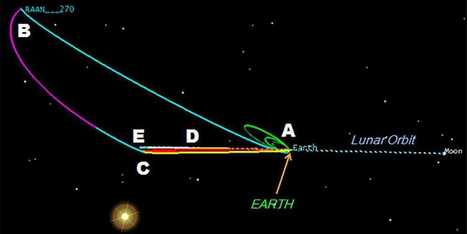


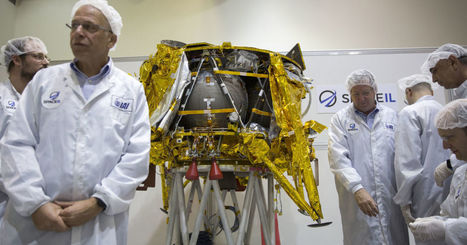
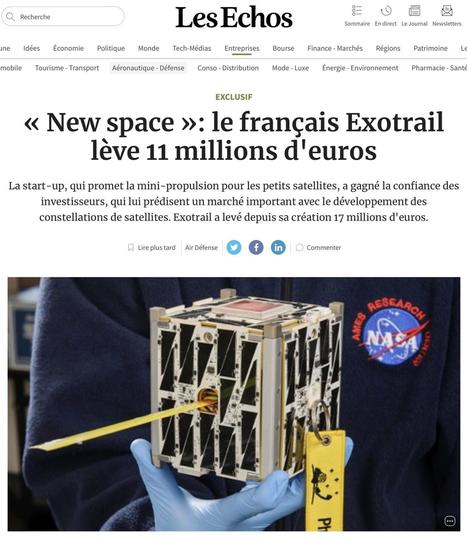
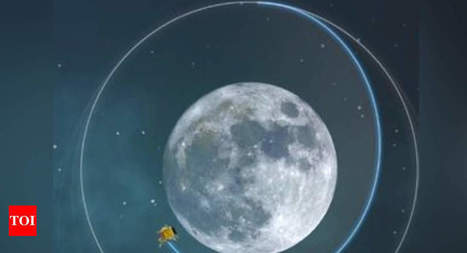
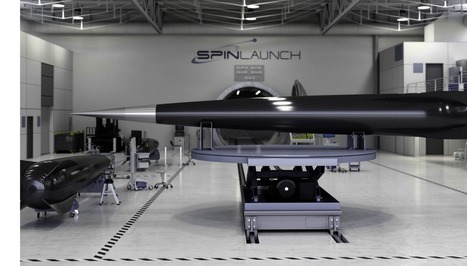





Business Insider original title is an insane #clickbait
"NASA patented a faster, cheaper route to the moon. The first spacecraft to use it could make Nobel Prize-winning discoveries about the universe."
Yet it remains interesting to learn about patenting trajectories, hiding microwave-oven sized satellites on the other side of the moon, and observing deep space / far time from a "cone of silence"